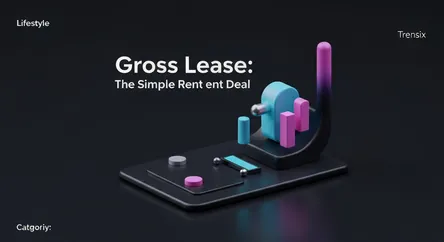Lifestyle
Gross Lease: The Simple Rent Deal

Explore the Gross Lease, a straightforward rental agreement where tenants pay a flat fee while the landlord covers all property operating expenses.
What is it?
A gross lease, also known as a full-service lease, is a commercial rental agreement where the tenant pays one flat fee. This single payment covers not only rent but also all of the property's operating expenses. The landlord takes on the responsibility for paying costs like property taxes, insurance, and maintenance. This all-inclusive structure is common in multi-tenant office buildings and retail spaces, offering a stark contrast to net leases where tenants pay these costs separately. Its defining feature is simplicity: one check, and you're covered.
Why is it trending?
The gross lease is gaining popularity due to its predictability, a valuable asset in an uncertain economy. For businesses, particularly startups, having a fixed monthly occupancy cost simplifies budgeting and eliminates the risk of unexpected bills for repairs or tax increases. This financial stability is a major draw. Landlords find it an effective tool for attracting tenants who value convenience. By bundling all costs into a slightly higher base rent, they offer a hassle-free experience that can make their property more competitive in the market.
How does it affect people?
For tenants, a gross lease provides peace of mind and simplifies financial planning, allowing them to focus on their core business rather than property management. They are shielded from fluctuating operational costs. For landlords, the structure presents both risk and reward. They absorb the risk of rising expenses, which could shrink their profit margins. However, they also have full control over the property's upkeep and can potentially increase their earnings if they manage to keep operating costs below the amount factored into the rent, incentivizing efficient management.